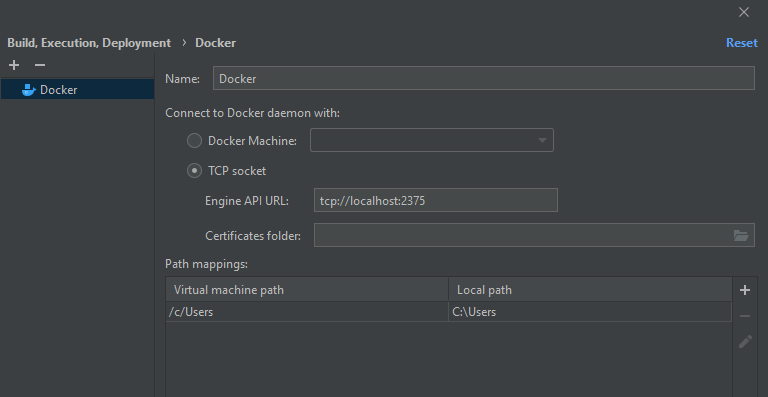Created at 2020-10-05Updated at 2020-10-10 Tag Docker / Linux
I wanted to test out Linux after I had purchased a new laptop which came with Windows 10 home. Although I was generally happy with my dev environment, I still wanted to try out Linux as a dev environment. I chose to try Pop OS as it was recommended by several people, especially on the PHPUgly and Syntax podcasts.
With PhpStorm 2020.2, the corresponding actions will show the logs in the editor instead of the Git tool window. This will ensure that there is enough space to display all the information. Choose the Compare with Current action from the Git Branches popup menu (VCS Branches). Full Support for GitHub Pull Requests. The GitHub support was extended and now PhpStorm can perform the entire Pull Request workflow inside the IDE. Starting from searching for PRs, checking all the info, adding comments, viewing the timeline, and everything else up.
Testing
I was able to download Pop OS ISO and install it to a bootable USB pen drive. I was able to boot the laptop and test things, for example, the Wi-Fi worked.
I purchased an additional hard drive connector as there was a spare compartment for a SSD drive. I already had an SSD drive from my previous laptop which I could use.
Installation
After installing the SSD drive I was able to boot from the USB pen drive and noticed my Windows 10, M2 SSD driver, was not detected, only the newly fitted SSD drive. This meant I could safely install the Pop OS without damaging Windows 10.
The installation was relatively painless menu-driven install. One problem I noticed was on PC reboot the laptop automatically boots to Pop OS drive. To boot into the windows drive, I have to press escape after shutting down, the laptop and choosing the Windows boot manager.
I didn’t time it exactly, but I would allow over an hour to install Pop OS and the upgrades.
More testing
After installing Pop OS, I tested a few more things such as my Bluetooth headphones and dual screen monitor.
Dev software
I wanted a flexible dev environment which included the following software, as a minimum:
- Google Chrome
- PhpStorm
- Docker
- VS Code
- Git

Google Chrome
Firefox is the default browser which comes with Pop OS. A quick search for “Google Chrome download”, leads directly to the download screen. Pop OS is a modified Ubuntu based Linux distribution, so selecting the x64 bit .deb (For Debian/Ubuntu) worked a treat. It downloaded and gave the option to open with the package manager, which installed it without any problem.
After installation, I could search for chrome by pressing the Windows key and typing chrome. It launched and gave the option to de the default browser, which I accepted. After signing in with my Google account all my bookmarks synced without any problem.
PhpStorm
PhpStorm download:
The PhpStorm install was more complicated, the file downloaded was PhpStorm- 2020.2.2.tar.gz
I opened the download folder, right clicked and unpacked, then selected the unpacked folder, cut it and created a Software folder in my home directory. Pasted in the folder.
Navigating the folder I opened the installation instructions.
Unpack the PhpStorm distribution archive that you downloaded where you wish to install the program. We will refer to this location as your {installation home}.
To start the application, open a console, cd into “{installation home}/bin” and type:
./phpstorm.sh
This will initialize various configuration files in the configuration directory:
~/.config/JetBrains/PhpStorm2020.2.
[OPTIONAL] Add “{installation home}/bin” to your PATH environment variable so that you can start PhpStorm from any directory.
[OPTIONAL] To adjust the value of the JVM heap size, create a file phpstorm.vmoptions (or phpstorm64.vmoptions if using a 64-bit JDK) in the configuration directory and set the -Xms and -Xmx parameters. To see how to do this, you can reference the vmoptions file under “{installation home}/bin” as a model but do not modify it, add your options to the new file.
Step 1 was already complete, step 2 was next. I navigated to ~/Software/PhpStorm-2020.2.2/PhpStorm-202.7319.77/bin, right-clicked a blank space and selected open with terminal. Then typed: ./phpstorm.sh
I followed the installation wizard and within minutes PhpStorm installed.
Docker
Next up was Docker, which was downloaded from:
The installation was more involved, as the recommended method included adding a repository, the LT&DR; version:
Update the apt package index and install packages to allow apt to use a repository over HTTPS:
Add Docker’s official GPG key:
Verify that you now have the key with the fingerprint 9DC8 5822 9FC7 DD38 854A E2D8 8D81 803C 0EBF CD88, by searching for the last 8 characters of the fingerprint.
Use the following command to set up the stable repository.
Update the apt package index, and install the latest version of Docker Engine and container, or go to the next step to install a specific version:
Got multiple Docker repositories?
- If you have multiple Docker repositories enabled, installing or updating without specifying a version in the apt-get install or apt-get update command always installs the highest possible version, which may not be appropriate for your stability needs.
- To install a specific version of Docker Engine, list the available versions in the repo, then select and install:
a. List the versions available in your repo:
b. Install a specific version using the version string from the second column, for example, 5:19.03.133-0ubuntu-focal.
Verify that Docker Engine installed correctly, by running the hello-world image.
Install docker-compose
Phpstorm 2020 License Server
Test:
Phpstorm License Server Github
Result! That install wasn’t too painful, just some copying and pasting. Job done :)
VS Code
A quick google for VS Code download found the right page:
First I needed to install snap:
Then vs code can be easily installed, via the snap store
Git
Test
N unblockeddefinitely not a game site. That is it! Pro tools 9 hd mac torrent. My Linux dev environment setup and ready for me to run.
